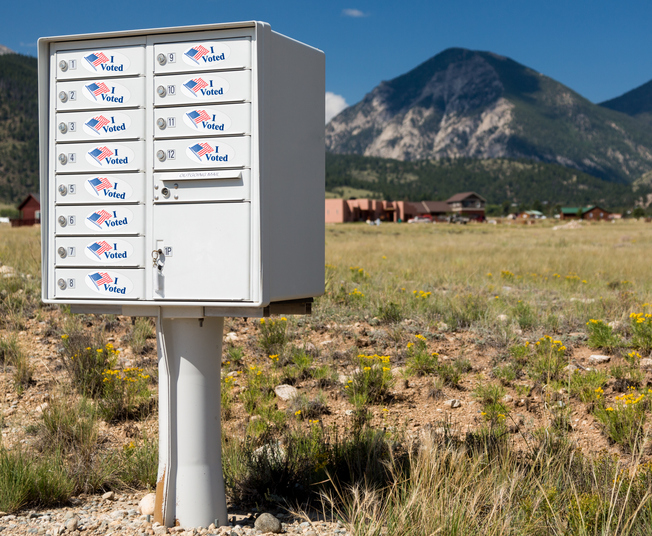By 2040, seventy percent of the U.S. population will live in the 16 most populous states, concentrated primarily in large urban areas. That will leave just thirty percent of the population, spread across thirty-four states, with control of sixty-eight Senate seats — a supermajority.
It’s one of the reasons an expanding group of progressive organizers is sounding the alarm for greater investment in rural and small city organizing. To many on the left, this may sound like a call to appeal to white conservatives. But that view is based on an incomplete and dated understanding of rural America.
We formed the Rural Democracy Initiative last year to help build organizing and communications capacity in small cities and rural communities. RDI consists of two funding collaborations, the 501(c)(3) Heartland Fund and the 501(c)(4) Rural Victory Fund. In 2020, these funds invested over $15 million in 99 groups in 19 states, with a particular focus on Arizona, Georgia, Michigan, North Carolina, Pennsylvania, and Wisconsin.
Five key observations following this election will inform our thinking going forward.
1. Rural margins matter.
In almost every battleground state, Joe Biden could not have won without improved Democratic performance in small cities and rural areas. This was driven in many cases by heroic local organizing that turned out large numbers of Biden voters, who were able to offset the much-discussed Trump turnout surge.
RDI created a national map to help visualize, by county, the shift in the presidential race from 2016 to 2020. In the six most pivotal states — Arizona, Georgia, Michigan, North Carolina, Pennsylvania, and Wisconsin — the increase in Democratic margins outside of the major urban centers was decisive.
In Pennsylvania, for example, Joe Biden defeated Donald Trump by just over 80,000 votes by improving his margins relative to Hillary Clinton in 2016 in smaller cities and rural areas throughout the state. Biden actually lost ground in Philadelphia, winning sixty-three percent of the vote compared to Clinton’s sixty-seven percent in 2016. But he made up for that by improving on Clinton in rural areas and small towns.
In Arizona, six percent of the state’s eligible voters are Indigenous, one of the largest Indigenous populations of any state. Much has been made of the Latinx vote in the state’s largest county, Maricopa. But it’s also true that massive turnout and support for Biden among Arizona’s Indigenous population throughout the rural north central and northeastern parts of the state provided more than the margin of victory for Biden statewide.
In Michigan, as in Pennsylvania, Biden actually lost ground slightly in the state’s major city relative to 2016. But he gained margin relative to Clinton throughout much of the rest of the state. Biden did eight points better, for example, in Emmet County, nine points better in Ottawa in the western part of the state, and nearly ten points better in Grand Traverse to the north. In fact, Biden performed better than Clinton in most of the northern one-third of the state, including the rural Upper Peninsula.
2. Nationally, the path to progressive power runs through the Senate. And the path to the Senate runs through rural America.
The same states that were key to Joe Biden’s win this year — Arizona, Georgia, Pennsylvania, and Wisconsin — will be priorities again in the 2022 Senate races. And just as rural margins were often decisive for Joe Biden in these states, they’ll be critical for progressive Senate candidates in 2022.
In 2024, Democrats (and aligned Independents) will be defending Senate seats in many states with significant rural populations, including Arizona, Maine, Michigan, Minnesota, Montana, New Mexico, Nevada, Ohio, Pennsylvania, Virginia, Wisconsin, and West Virginia. Progressives cannot afford to lose any of these states in order to control the Senate.
3. Building progressive power also requires organizing in rural areas for state political and legislative fights.
The emergence of powerful statewide organizing in states like Michigan, Pennsylvania, and Wisconsin made an enormous difference this presidential election. That organizing must be sustained and expanded across the country not just for elections but for the big policy fights ahead if we hope to win a progressive agenda.
Even in states with strong progressive majorities, it can be incredibly challenging to pass major legislation without more organizing in rural areas. For example, in 2019, major climate legislation in Oregon was thwarted by the high-profile, right-wing mobilization of farmers, loggers, and other rural Oregonians without adequate planning for a response from progressive rural leaders. Our opposition wins when they keep our communities from uniting in common cause across both race and place to get the big things done.
Additionally, local elected officials like county commissioners have huge control over decisions that impact farm and forest lands, transportation, and the basic public services that touch people’s daily lives. The Wisconsin Farmers Union’s anti-gerrymandering campaign has resulted in “fair maps” resolutions at the local and county level in every corner of the state. And public utility districts and rural electric coops have enormous discretion for investing beyond energy in areas such as economic development, broadband, and small business loans.
4. Rural does not equal white.
Many on the left may be surprised to learn how diverse rural America can be. Overall, one in five rural Americans are non-white. Many parts of the West and Midwest have majority Indigenous populations. Throughout the South and Southwest, an expanding number of rural areas are now majority Black or Latinx. And in the past thirty years, new immigrants have increasingly migrated to rural areas, accounting for thirty-seven percent of overall rural growth from 2000 to 2018.
Supporting work to build progressive power outside of major population centers means investing in remarkably diverse places. The diverse range of rural work that RDI funded this year included working with tribal leadership to organize among the Navajo Nation in Northern Arizona, organizing among geographically diverse Latinx communities in Wisconsin and North Carolina, engaging Black voters in communities throughout Georgia, and geographically dispersed, multi-racial deep canvassing throughout Michigan and Pennsylvania.
Rural America is also not the conservative monolith many on the left may think. One of the most important election polls — the 2020 American Election Eve poll — has for years provided nuanced data about the opinions and voting behaviors of voters of color. This year, with support from RDI, the poll included a large white and rural sample. Some highlights:
-
Eighty-nine percent of rural Black voters supported Biden (eighty-six percent support from Black men), in contrast to reporting about increased Trump support in these demographics.
-
In Arizona, rural support for Biden among Latinxs (seventy-four percent) and Native Americans (eighty-eight percent) made the difference in the election.
-
Most strikingly, the American Election Eve poll showed that the views of rural voters, including whites, did not diverge substantially from urban and suburban voters on many key issues.
5.The disconnect between rural communities and the progressive movement isn’t about policy. It’s about engagement.
RDI’s key takeaway from funding rural organizing across the country mirrors the observation of Matt Hildreth from RuralOrganizing.org: progressives often have greater policy alignment with rural Americans but lack authentic, sustained engagement. Conservatives aren’t as aligned on policy, but their engagement with rural people is more substantial, authentic, and sustained.
The 2020 American Election Eve poll bears this observation out. In addition to demonstrating greater policy alignment than many may expect between rural and urban voters, the poll showed that rural white voters reported the lowest overall levels of contact by political campaigns in the electorate.
Simply put, If we don’t show up, we can’t earn their vote.
But we also have to show up authentically and demonstrate our commitment to improving life in rural communities that never recovered from the Great Recession.
Addressing economic inequity, wherever it persists, is a central tenet of progressive politics. Yet, struggling rural communities do not hear that progressive organizations and leaders understand their challenges and are working to address them. This leaves rural voters frustrated and vulnerable to exploitation by people like Trump, who spout phony populist economic messages. We saw that play out again this year, with the overwhelming majority of counties, mostly rural and representing just thirty percent of America’s economy, voting for Trump despite the fact that his policies have failed to improve their lives.
We need a clear agenda for rural prosperity that aligns with an overarching progressive agenda. RDI will support a series of gatherings in early 2021 to help identify key policies that can be part of a rural prosperity agenda around which we can organize and build power. Grantees tell us that COVID relief, economic development, access to affordable healthcare, job-generating climate solutions, worker protections, corporate accountability, and support for small businesses and family farmers are issues that resonate strongly with rural people.
To help focus resources and attention on these issues, RDI will support ideas like a newly created Office of Rural Prosperity. And we will evangelize and help build momentum for greater investment in rural organizing and communications capacity so that we can sustain and expand on the groundwork laid in 2020.
To build the kind of progressive power we will need in the years ahead, rural America must be part of the equation.

